Flora & Fauna
Over 600 species of plants grow on the shores of Untersee. One of them is the Lake Constance forget-me-not, which blooms in spring on the inhospitable gravel banks. Spring gentian, mealy primroses and Siberian irises - plant lovers' hearts leap.
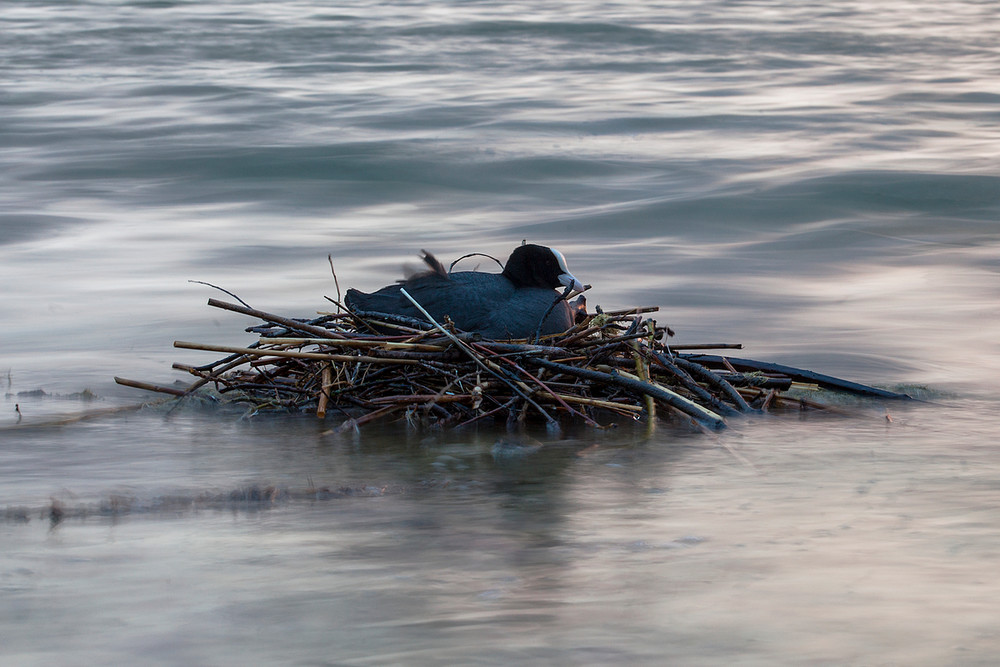
Birdlife
Untersee is one of the most important and species-rich bird regions in Central Europe. Numerous bird species cavort in the nature reserves. For many migratory birds, the climatically mild Untersee region is one of the most important Central European resting & wintering areas. Several tens of thousands of tufted ducks from Siberia and thousands of cob ducks from Spain spend the whole winter on the Untersee.
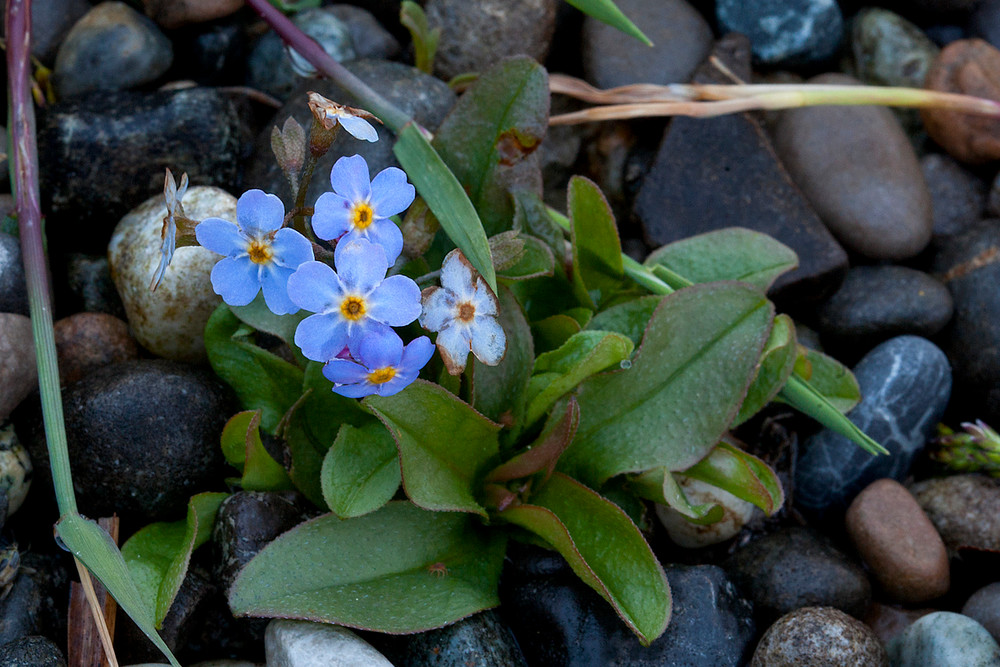
Shore vegetation and Lake Constance forget-me-not
Over 600 species of vascular plants grow on the shore banks of Untersee. In April, the blue ribbon of the Lake Constance forget-me-not colors the gravel banks. When the spring gentian opens its bright blue flowers, a colorful spectacle of colors begins on the reed meadows. In early summer, up to 50,000 mealy primroses can color the meadows pink. Then, little by little, one discovers various orchids and the Siberian iris, which catches the eye with its deep blue blossom.
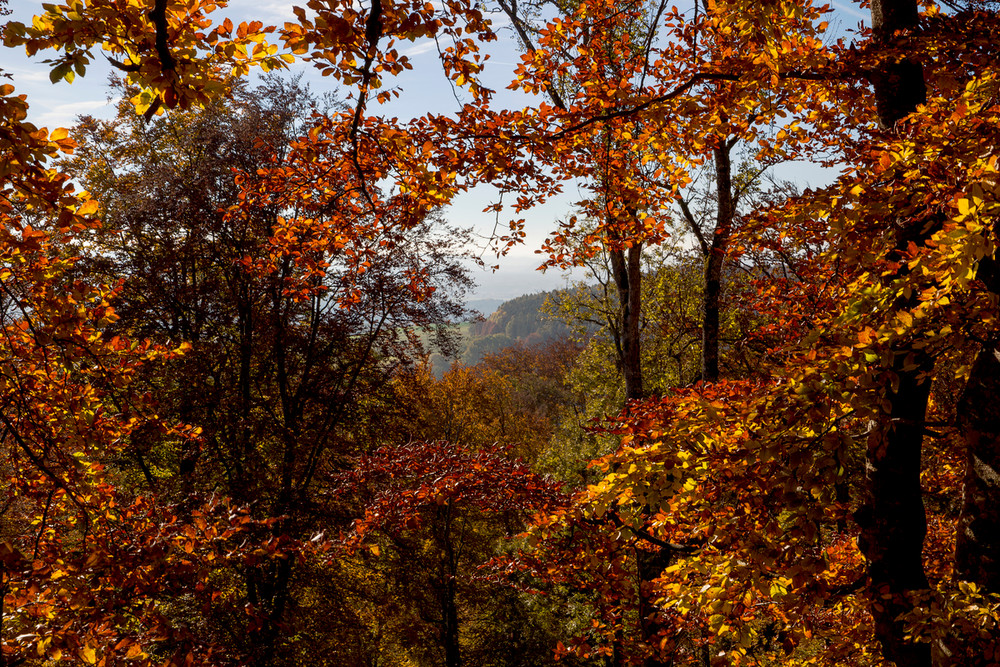
Forests and meadows
Extensive forest areas can be found on Western Lake Constance, especially on the Bodanrück, the Schienerberg, in the Hegau and on the Thurgauer Seerücken. A well-marked network of paths leads hikers safely to the most beautiful vantage points and inns.
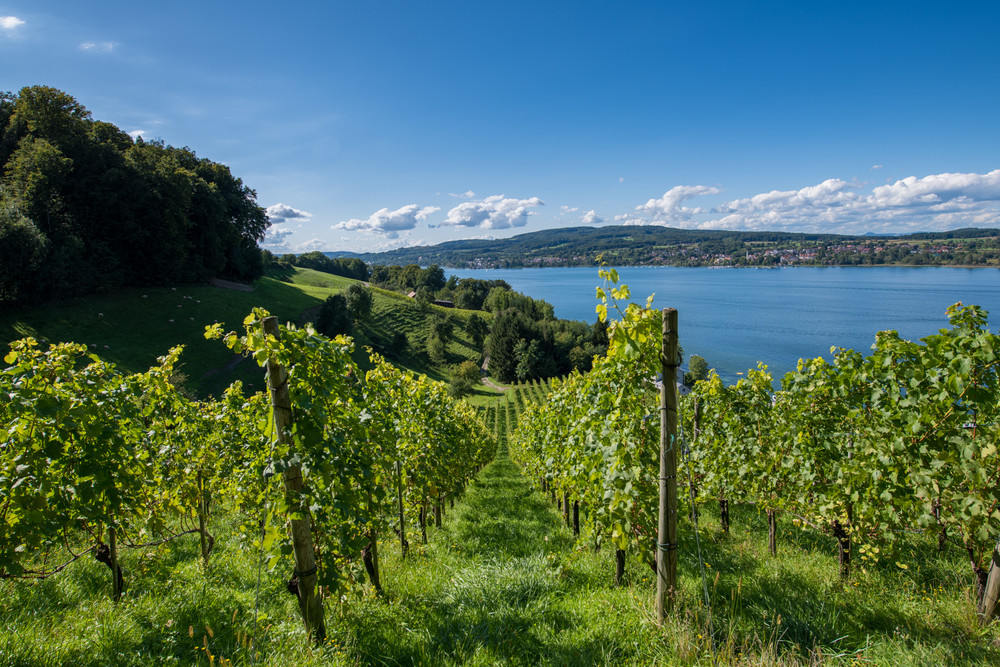
Vineyards
Striking vineyards characterize the landscape of the Western Lake Constance. On the island of Reichenau - the southernmost wine-growing region in Germany - viticulture has a tradition dating back to the Middle Ages. Germany's highest-altitude vines grow on the slopes of the Hohentwiel. The vineyards on the Höri peninsula and near Bohlingen have deep and well-aerated soils that give the wines the distinctive fruitiness typical of Lakewine. The vineyard hiking trail that begins in Tägerwilen is reminiscent of Mr. Müller from Thurgau, after whom the most important Lake Constance grape variety is named.
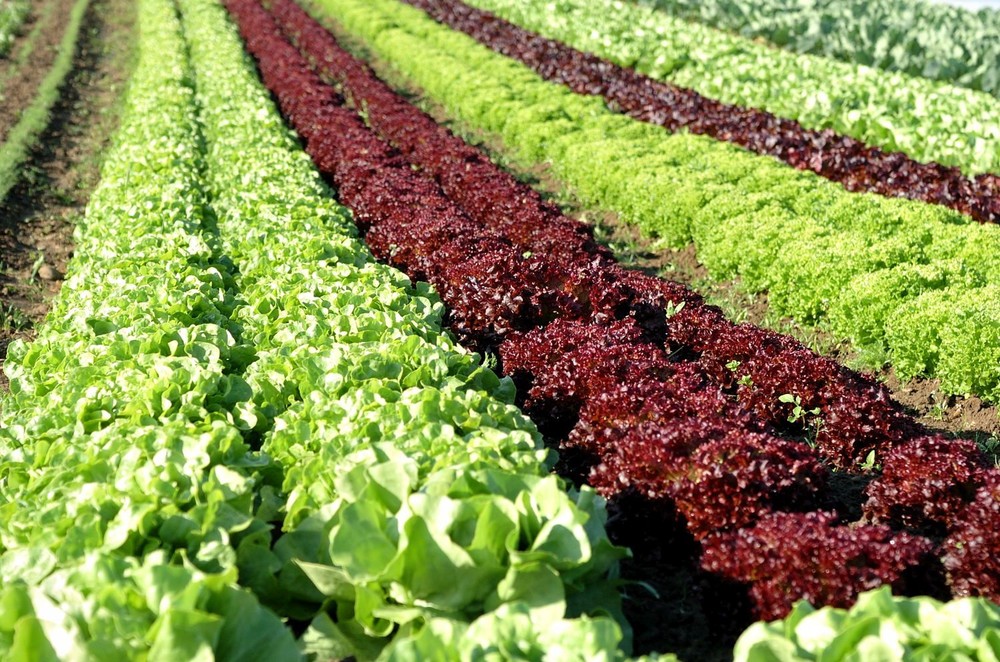
Vegetable fields
The mild lake climate allows the Lake Constance vegetables to thrive particularly well. The lake as a heat reservoir protects the young plants from frost. Centuries ago, Höri farmers supplied the neighboring towns with lettuce and vegetables. The invention of the greenhouse and the lettuce crate made it possible for Reichenau to become a vegetable island. The allotments and vegetable fields in Tägermoos still supply the towns of Constance and Kreuzlingen today. You can buy regional fruit and vegetables at the street stalls and in the stores. A specialty is the Höri Bülle, an onion with a light reddish-brown color that only grows on the Höri Peninsula and is protected throughout Europe.
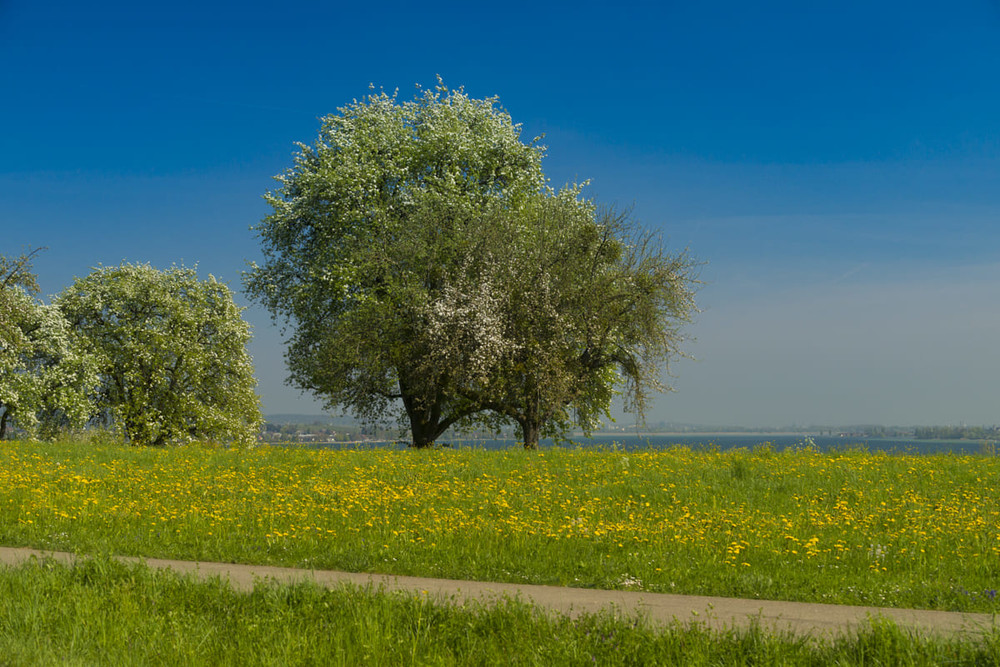
Orchard meadwos and fruit fields
Orchard meadows and apple orchards are, like the vegetable and wine-growing areas, part of the old cultural landscape on Western Lake Constance. The canton of Thurgau is characterized by extensive apple orchards, which give the landscape a very special appearance, especially in spring. The German side is captivating with its varied orchards, on which some ancient fruit varieties grow and which are also processed into tasty juices and brandies. On orchard nature trails and variety gardens in Moos, Radolfzell-Möggingen and Hemmenhofen you can learn a lot about traditional fruit growing and get to know rare orchard varieties. The BUND offers guided tours and you can be part of landscape conservation and tree pruning.

